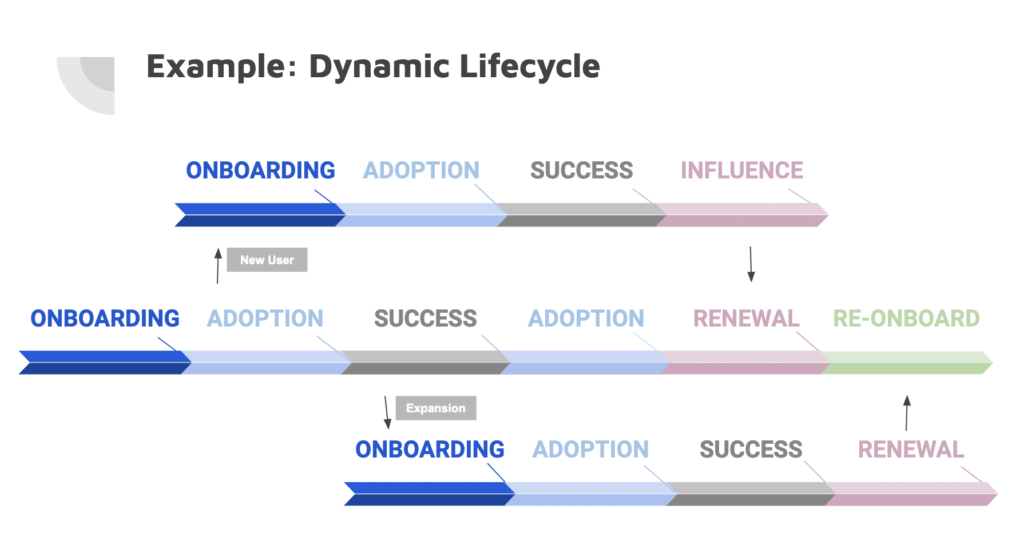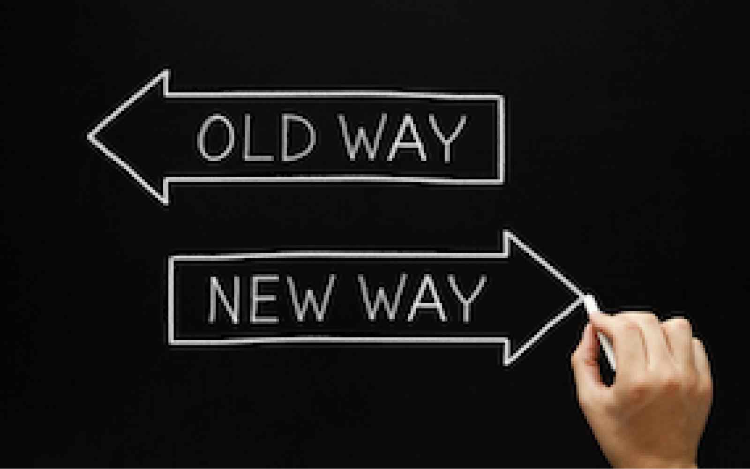What is different between pre-sales (new business/new logos) and post-sales (customer success, account management etc)?
Well, there are many things of course. But fundamentally one of the most important differences is that the (pre-) sales process is mostly linear in nature – you find a lead, you engage it, you close it – while the customer (post-sales) process is not – while you start with a lead becoming a customer and end with them renewing or churning at the end, what happens in-between those two end-points is more complex.
Let’s use an example: Company A gets signed on to your SaaS product with 5 users with an annual subscription. You onboard the company, train the users and implement the product.
Great!
But along the way a lot of things can and will happen. Users leave. New ones come in. They buy more products, those now need to be implemented. They change strategy. They have a great experience. They have a bad experience. Usage goes up, or it goes down. They give a good NPS. Then the Decision Maker leaves. Etc etc.
Simply put, a lot of things happen in the post-sales stage and a lot of people are involved, on both sides. Definitively not a linear process.
So given that, why do most customer success teams still use a linear, static Customer Lifecycle approach?
E.g. Day 0-90 Onboarding – Day 90-180 Adoption – Day 180-360 Renewal – Day 360+ Growth
It simply does not tell the full story and it does not align with how your customers “live” with you over time.
Instead, you should use Dynamic Customer Lifecycles.
Where each part of the lifecycle is dynamic and agnostic. Meaning a customer can move back and forth between phases of the lifecycle, new branches of the lifecycle can be created (i.e. when buying an additional product or onboarding a new user). Playbooks/plays/actions are run based on this dynamic data & movement, and not just on static, time-based data (e.g. day 1-90 customer is in onboarding and we do XYZ…what if customer is not onboarded still on day 180?).
You can organize the Dynamic Lifecycle around three key parts:
- The primary product/contract
- Secondary/additional products being added
- Users and their journeys
In a Dynamic Lifecycle, you should have Lifecycle Phases that are:
- Determined by behavior and data, not by time as a customer
- Moveable, where a customer can be moved back and forth between phases
- Flexible, where parts of the customer can be in different Phases (e.g. a user can be in Adoption while the overall account is in Renewal)
And of course, you should define what phases and criteria for each phase you should use.
Example of phases to use:
- Onboarding – setup of users and product(s)
- Adoption – customer and users adopt the product(s), set criteria for what adopted means
- Success – products are adopted, other indicters are positive, customer heading towards renewal/growth
- Renewal -high risk – customer in renewal window, but deemed as high risk based on criteria like adoption, interactions, feedback
- Renewal -happy – customer in renewal window and deemed as happy
- Growth – in prime position to grow, can be at any time during their tenure
Here is an example of a Dynamic Lifecycle:

Using Dynamic Lifecycles as opposed to the old-school, static lifecycles will allow you to better understand where your customers really stand and allow you to more proactively and intentionally work with each customer and user.
Start today and you will get happier customers and users, find more expansion opportunities and renew more customers, for longer.
Want help? Reach out to success@revsetter.com for a free CS Audit.

